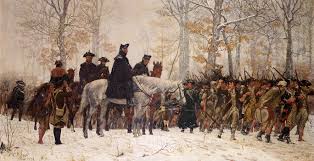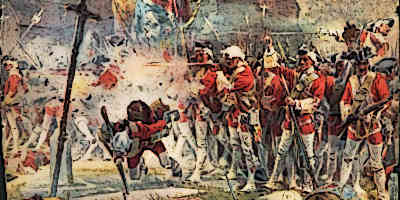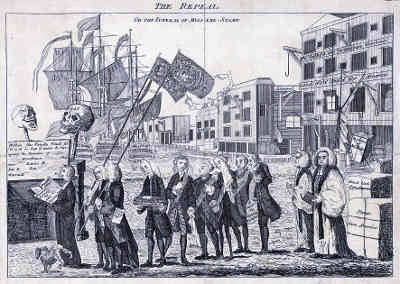Top 10 Events of the American Revolution
The American Revolution began in 1765 and continued until 1783. It slowly built up to an all-out revolt against British Rule by the thirteen colonies.
The American Patriots defeated the British Armed Forces with the help of the French and declared independence from the Crown.
Below are the top 10 events of the American Revolution
1. The End of the Seven Year War (1750s- 1763)
The seven-year war began in the early 1750s. It was a global conflict which began after the British officially declared war against France. It is also known as the ‘French-Indian War’ in America. Britain was threatened by France’s continued expansion into the colonies, especially the Ohio River valley.
During the first official year of the war, the British suffered a series of defeats against the French and their Native alliances. Soon, however, the tide turned in their favor. The war ended after the Paris Agreement was signed in 1763.
2. The Stamp Act, 1765
Also known as ‘Duties on American Colonies Act’, the Stamp Act of 1765 was an act of Parliament imposed during British Rule on British colonies in America. It required many documents and printed materials being used in the colonies be presented on special stamp paper carrying an embossed revenue stamp, originally produced in London.
It had to be paid in British currency and not colonial paper money.
The purpose of the tax was to pay for the British troops stationed across different colonies after the French-Indian War. The Act was extremely unpopular with the colonists, who had never feared a French invasion to begin with. They insisted that they had already paid their fair share of the war expenses. A majority even saw it as a violation of their rights.
3. The Boston Tea Party, 1773
A group called ‘Sons of Liberty’ launched the protest famously known as The Boston Tea Party. It was launched in December, 1773. It was aimed at the Tea Act of May 1773, which allowed the British East India Company to sell tea from China in the American colonies without having to pay tax, other than those imposed by the Townsend Act.
The colonists poured out chests of tea into the sea after raiding a ship of the East India Company. When the British government harshly responded to the protest, it escalated into the American Revolutionary War.
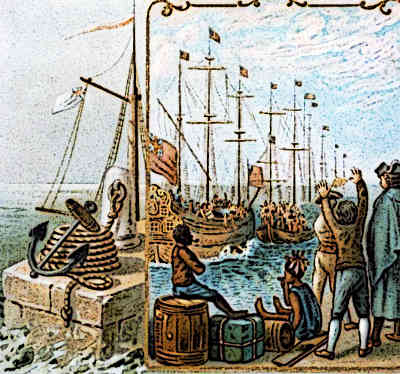
Boston Tea Party Tea Act 1773, Protests against the British Tea Act (Tax)
4. Passage of Intolerable Acts, 1774
A set of laws passed by the British Parliament after the Boston Tea Party incident, they aimed to punish the colonists for their defiance against the Crown. They were referred to as ‘The Coercive Acts’ in Britain.
The Acts took away the right of self-governance and other historic rights from the Colony of Massachusetts. They played a key part in triggering all-out revolution against the British Empire in the settler colonies.
5. The First Continental Congress, 1774
In the summer of 1774, the delegates from 12 out of the 13 colonies met in Philadelphia to discuss the implications of independence from British Rule. This meeting took place after the British Navy instituted a blockade of the Boston Parliament in response to the Boston Tea Party protest. The delegates agreed to impose an economic boycott of all British trade, and wrote a petition to the King for their grievances to be heard.
6. Battle of Bunker hill, 1775
Early on in the Revolution, the Battle of Bunker hill dealt a blow to the Patriot Army. British Forces, under the command of Major General Howe, marched to Breed’s Hill. They were finally able to push the Patriot (American) military forces into hand-to-hand combat.
The out-numbered Americans were forced to retreat.
Despite the apparent defeat, however, the Patriot’s gunfire cut down nearly 1000 British troops. While the battle seemed to be a victory for the British, it was a huge booster for Patriot morale.
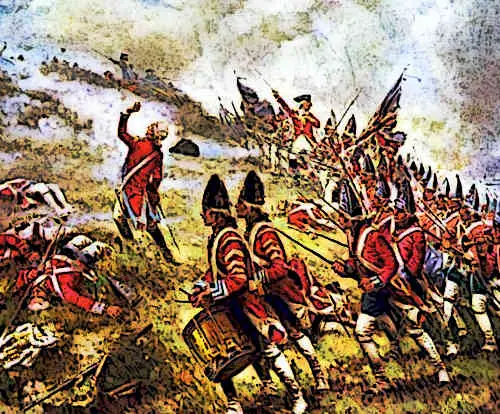
7. Battles of Lexington and Concord, 1775
The first military engagement(s) of the American Revolutionary War, the battles were fought on April 19th, 1775 in Middlesex County. They officially marked the beginning of the War. The two battles happened in quick succession. The conflict at Lexington was in reality a skirmish, which quickly ended.
It was at Concord that real battle was waged. In response to the firing at Lexington, the militiamen of Concord and Lincoln mustered at Concord. The fighting was so thick that The Patriots fired over each others’ heads at the British, forcing them to retreat.
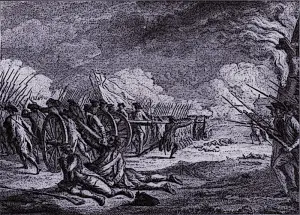
Battle of Lexington 1775
8. Battles of Saratoga, 1777
The Battle of Saratoga gave a decisive victory to the Patriot Army over British forces. British General John Burgoyne led a large army in Champlain Valley, hoping to meet other British regiments from the other three sides. The regiments never arrived and General Burgoyne found himself surrounded by colonist forces in upstate New York.
He led his army to fight two small battles just nine miles south of Saratoga, New York. The battles took place 18 days apart. He found himself trapped on all sides by the American forces and was forced to surrender his entire army on October 17th.
9. Siege of Charleston, 1780
A major engagement between the British and the colonists, the Siege of Charleston was fought between March 29th and May 12th, 1780. It was a major victory for British Forces. The Siege took place after the British, following the collapse of their strategies in the northern parts of the land, shifted their focus on the southern colonies.
After being besieged by British Forces for close to six weeks, Major-General Benjamin Lincoln finally surrendered his troops to the British. The British captured more than 5200 prisoners that day. It was a major defeat for the Patriot Army.
10. The Treaty of Paris, 1783
The War officially ended after the signing of the Treaty of Paris in 1783. It was negotiated by the three American statesmen Benjamin Franklin, John Adams and John Jay. The Crown formally recognized American independence and ceded most of its territory east of the Mississippi River.
The agreement doubled the size of the newly founded nation and paved the way for renewed expansion. When news of the British defeat reached England, support for the war quickly faded both inside the British Parliament and with the general public.

- American Revolution
- American Revolution *13 Suprising Things
- American Revolutionary War
- Boston Massacre *10 Suprising Facts
- Declaration of Independence
- End of the American Revolution
- Examining the Aftermath of the American Revolution
- Examining the Role of Propaganda in the American Revolution and Its Impact on Public Opinion.
- General Anthony Wayne *Madman of the Revolution
- Global Impact of the American Revolution
- John Hancock
- Secrets of John André
- The American Revolution: An Economic & Political Struggle
- The Boston Massacre – How Many People Died?
- Top 10 Events of the American Revolution
- Top 10 People of the American Revolution
- What Caused the American Revolution
